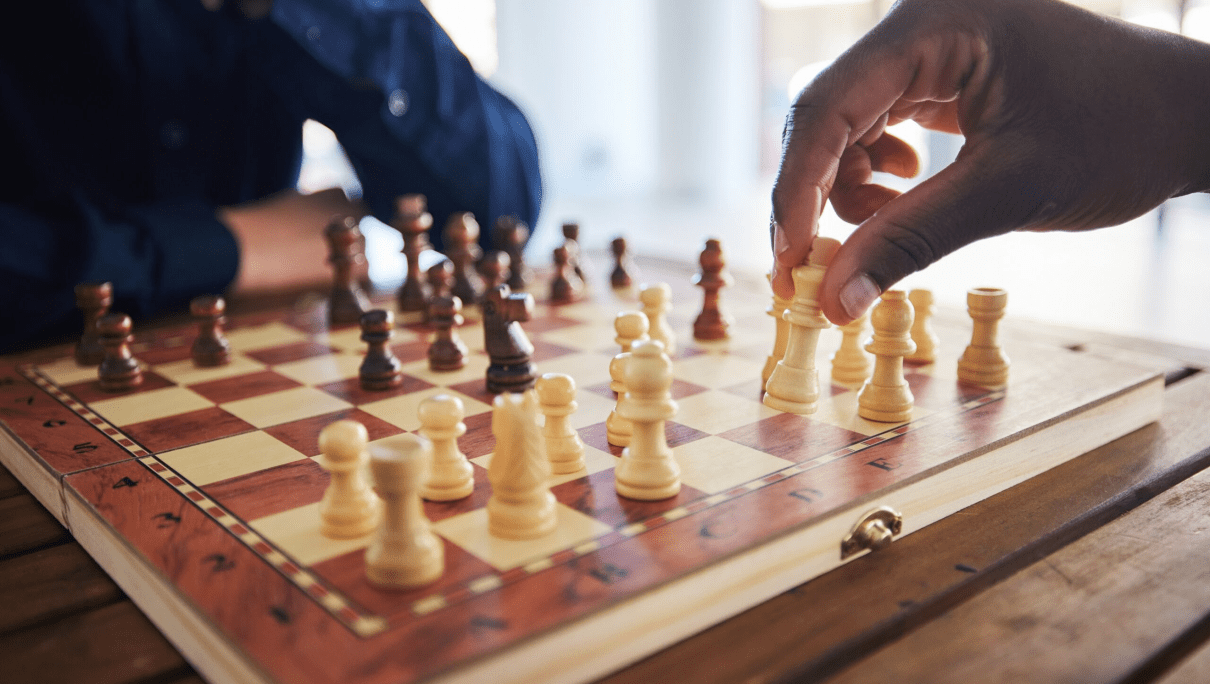I learned to play chess as a kid, long before I ever understood strategy, competition, or patience. Back then, it was just a fascinating board with strange pieces moving in calculated patterns. But over time, it became something deeper — a reflection of life, creativity, and decision-making.
My favorite piece has always been the rook — strong, direct, and quietly strategic. There’s something about the rook’s ability to fork two threats at once that reminds me of how powerful clear direction can be in both design and business. Chess, for me, has never been about aggression; it’s about timing, patience, and positioning.
Whenever life gets overwhelming or work gets intense, I turn to chess. It’s my calm space — the one place where I can pause, think, and reset my mind. I’ve been a proud member of Chess.com since April 6, 2011, under the username Mr-Echeozo, with over 21,623 games played, including 1,139 blitz matches. Every single match — whether a win, a draw, or a tough loss — has shaped how I think, create, and lead.
Think a few moves ahead
In chess, you don’t just move pieces — you plan a future. You imagine possibilities, predict your opponent’s next move, and stay ready for surprises. I’ve carried this same discipline into my work at Bluoyster Technology Services.
Before launching a website or running a campaign, I try to think several steps ahead — considering user behavior, future scalability, and market trends. Chess taught me that foresight is the ultimate form of creativity. You don’t react — you anticipate.
Every piece has a purpose
In chess, every piece matters — even the pawns. Each has a unique role in achieving victory. That lesson deeply influenced how I manage projects and teams.
In business, success isn’t about doing everything yourself; it’s about understanding everyone’s strengths and aligning them toward a shared goal. Just like a well-coordinated chess attack, great work happens when every “piece” — designer, developer, marketer, or strategist — moves with purpose and unity.
Patience is power
The best chess players don’t rush. They observe. They wait. They build pressure until the right moment to strike.
That patience has saved me countless times in my career. When clients are anxious for results or when a design isn’t coming together, I remind myself that strategy takes time. The best outcomes are rarely instant; they’re crafted through consistency, observation, and discipline. In both chess and business, speed without clarity is chaos.
Every loss is a lesson
I’ve lost hundreds — maybe thousands — of games over the years. And each one taught me something valuable: where I miscalculated, where I got overconfident, or where I failed to see the bigger picture.
That humility has helped me grow faster in business than any success ever did. I no longer fear setbacks. Whether it’s a project delay, a failed pitch, or an unexpected client change, I now see every challenge as data for improvement.
Chess made me understand that failure is never final — it’s feedback.
Chess may look like a quiet game played in silence, but it’s a profound exercise in strategic thinking, emotional control, and creative foresight. Every time I sit at the board, I’m reminded that life and business aren’t about winning every battle — they’re about seeing the board clearly, adapting quickly, and staying calm under pressure.
For me, chess isn’t just a hobby; it’s a mental gym that keeps my leadership sharp and my creativity grounded.
It has taught me to see patterns where others see problems, to stay patient when the world rushes, and to find strength in stillness.
So when I look back at my journey — as a designer, entrepreneur, and strategist — I realize that much of who I’ve become was built on lessons I first learned at that checkered board.
Because in chess, as in life and business, the real victory isn’t just in winning — it’s in learning to think, plan, and evolve.



